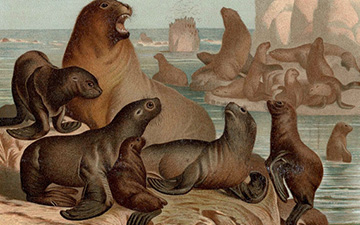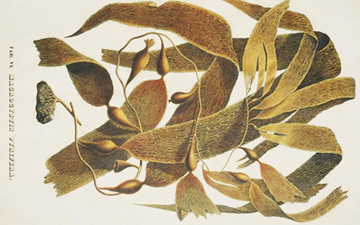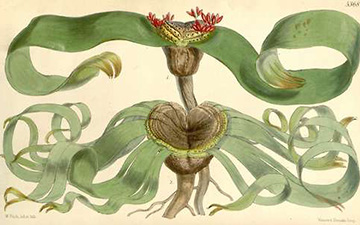DIY Cards

Galapagos sea lion
Zalophus wollebaeki


DARWIN DECK BETA | 8 POINTS
• Zalophus wollebaeki has a MOVE of 2
• Galapagos to Auckland
Cool, Warm
Graphic by David Ng
The Galápagos sea lion (Zalophus wollebaeki) is a species of sea lion that exclusively breeds on the Galápagos Islands and – in smaller numbers – on Isla de la Plata (Ecuador). Being fairly social, and one of the most numerous species in the Galápagos archipelago, they are often spotted sun-bathing on sandy shores or rock groups or gliding gracefully through the surf. Their […] read more

Floreana Mockingbird
Mimus trifasciatus


DARWIN DECK BETA | 3 POINTS
• Mimus trifasciatus has a FLIGHT of 2
• Galapogos to Auckland
Warm, Hot
Graphic by David Ng
The Floreana Mockingbird or Charles Mockingbird (Mimus trifasciatus) is a bird species in the family Mimidae. It is endemic to Floreana, one of the Galápagos Islands of Ecuador; at present it only occurs on offshore islets however. Its natural habitat is subtropical or tropical dry shrubland. Previously classified as an Endangered species by the IUCN, recent research shows that its numbers are decreasing more and more rapidly, and it is on the brink of extinction. It was […] read more

Giant kelp
Macrocystis pyrifera


DARWIN DECK BETA | 3 POINTS
• Beunos Aires to Port Famine
Cool, Warm
Graphic by David Ng
Macrocystis pyrifera, commonly known as Giant kelp or Giant bladder kelp, is a species of kelp (large brown algae), and one of four species in the genus Macrocystis. Giant kelp is common along the coast of the eastern Pacific Ocean, from Baja California north to southeast Alaska, and is also found in the southern oceans near South America, South Africa, andAustralia. Individual algae may grow to more than […] read more

Coral – Class Anthozoa
Class Anthozoa


DARWIN DECK BETA | 3 POINTS
• Anthozoa is a SUSPENSION FEEDER, and must be played adjacent to at least 1 PLANKTON SPECIES
• Sydney to Falmouth
Warm
Graphic by David Ng
Anthozoa is a class within the phylum Cnidaria. Unlike other cnidarians, anthozoans do not have a medusa stage in their development. Instead, they release sperm and eggs that form a planula, which attaches to some substrate on which the cnidarian grows. Some anthozoans can also reproduce asexually through budding. More than 6,100 species have been described.[1] The name comes from the Greek words άνθος (ánthos; “flower“) and ζώα (zóa; […] read more

Scalesia pedunculata
Scalesia pedunculata


DARWIN DECK BETA | 3 POINTS
• Galapogos to Aukland
Warm, Hot
Graphic by David Ng
Scalesia pedunculata Hook.f. is a member of the Daisy family or Asteraceae, growing to a slender tree (20m tall, DBH20cm), and found in dense stands on the humid windward coasts of the islands of Santa Cruz, San Cristobal, Santiagoand Floreana in the Galapagos Islands. The Galapagos archipelago lies in the southeast trade wind zone, so that climate and weather are dominated by the moisture-bearing trade […] read more

Welwitschia
Welwitschia mirabilis


DARWIN DECK BETA | 2 POINTS
• Sydney to Falmouth
Hot
Graphic by David Ng
Welwitschia is a monotypic gymnosperm genus, comprising solely the very distinct Welwitschia mirabilis. The plant is commonly known simply as Welwitschia, and has various common names in local languages, for example kharos orkhurub in Nama, tweeblaarkanniedood in Afrikaans, nyanka in Damara, and onyanga in Herero. It is the only genus of the family Welwitschiaceae and order Welwitschiales, in the division Gnetophyta. Informal sources commonly refer to the plant as a “living fossil“.[1][2] Welwitschia mirabilis is endemic to the Namib desert within Namibia and Angola. Welwitschia is named after the Austrian […] read more